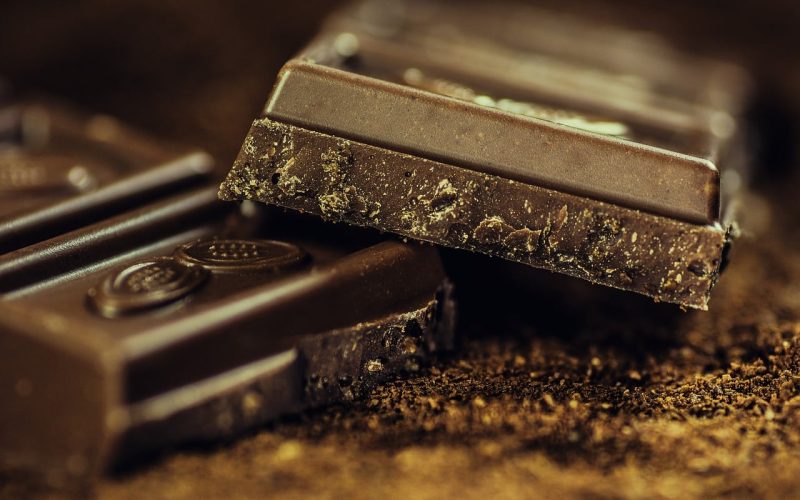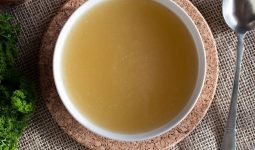Running out of cocoa powder can be a hassle when you’re in the middle of baking or cooking, but don’t worry.
There are many substitutes you can use that might already be in your kitchen.
Different types of cocoa powder, like black cocoa and Dutch process cocoa, offer unique flavors and textures to your recipes.
If a recipe calls for natural cocoa powder, you likely need it, as it’s common in most stores.
Natural cocoa powder brings acidity to your recipes, so if you can’t use it, try adding another acidic ingredient or adjusting your leavening agent.
On the other hand, the Dutch process or black cocoa works well with baking powder and doesn’t add acidity, making it easier to swap with alternatives.
These substitutions allow you to create delicious cakes, cookies, muffins, and more without missing a beat.
1. Raw Cacao Powder
Raw cacao powder comes from cacao beans that are processed at low temperatures. This keeps more of the natural nutrients intact compared to regular cocoa powder. It has a richer concentration of antioxidants, polyphenols, and flavonoids.
| Nutrient | Benefit |
|---|---|
| Magnesium | Helps with muscle and nerve function |
| Selenium | Supports immune system |
Antioxidants found in raw cacao powder can help your body fight free radicals, the molecules that can cause damage to cells. The higher levels of these beneficial compounds give raw cacao its reputation for a stronger nutritional profile.
When you use raw cacao powder as a replacement in recipes, you can substitute it with a 1:1 ratio for cocoa powder. Be cautious, though—its bitter taste might not suit all baked goods. Instead, try it in no-bake desserts like cheesecakes where other sweet flavors can balance the bitterness.
Raw cacao powder doesn’t change the color or texture of your treats, so it serves as an easy switch. Enjoy the health boost from this nutrient-packed ingredient while making delicious, health-conscious desserts.
2. Carob Powder
Carob powder, sometimes used in place of cocoa powder, is not derived from chocolate. Made by drying, roasting, and grinding carob pods, it has a texture similar to cocoa powder but is naturally sweeter. When using carob powder, you can usually keep the same measurement as cocoa powder in your recipe and reduce the sugar to prevent it from becoming too sweet.
Unlike cocoa, carob powder doesn’t bring a chocolaty flavor to your dishes. Instead, it offers earthy, nutty notes that remind you of vanilla or caramel. This unique taste makes it a popular natural sweetener for both foods and beverages.
Carob powder boasts a caffeine-free profile, making it a great alternative if you avoid caffeine. Its color can vary from light to dark brown depending on the brand. You can use carob powder in a variety of recipes, including smoothies, banana bread, and pudding. The versatility of carob powder allows you to enjoy its sweet, pleasant taste in many of your favorite treats.
3. Couverture Chocolate
When you’re baking, you might come across dark couverture chocolate. It’s not in powder form, so you can’t just measure it out directly like you would with cocoa powder. You’ll find it in blocks or chips, and it packs a punch with very similar rich notes. The main difference lies in its higher fat content, thanks to the cocoa butter.
While cocoa powder only contains about 10-15% cocoa butter, couverture chocolate has at least 31%. This means it adds more fat to your recipe, which you need to account for. If your recipe calls for butter or oil, try starting with less and adjusting as you go.
To use this chocolate, melt it until smooth. For recipes with lots of eggs, let it cool slightly and then temper to avoid curdling. If you’re replacing cocoa powder, use 25% less couverture chocolate. The texture won’t be exactly the same, but it works well for rich treats like mousse, muffins, and double chocolate cookies.
Here are a few tips for using couverture chocolate:
- Melt until smooth: Ensures even distribution in your batter.
- Temper chocolate: Prevents curdling when mixed with eggs.
- Use less fat: Adjust oils or butter in your recipe.
Couverture chocolate adds a creamy texture and deep chocolate flavor to your baked goods, making it a fantastic alternative for cocoa powder. For more information, you can check out 13 Cocoa Powder Substitutes Full of Chocolate Flavor.
4. Cacao Nibs
Cacao nibs, often used in milkshakes, overnight oats, and salads, are small crushed parts of cacao beans. They have a bitter taste and a satisfying crunch. These nibs can be ground into homemade cocoa powder with some simple kitchen tools. Start by roasting the nibs in the oven until they become toasty, which helps deepen their flavor.
To grind them, begin by using the pulse setting on a food processor to break the nibs into smaller pieces. After that, transfer the granules to a coffee grinder to turn them into a fine powder. This method takes time and effort, but you get a pure form of cocoa without added sugar or fat.
If your recipe needs a large amount of cocoa powder, grinding tiny batches of cacao nibs might seem like a lot of work. Yet, for small quantities, this method works well. Cacao nibs add a crunchy texture and intense chocolate flavor to your dishes, making them a versatile ingredient in your kitchen. They can be a great substitute for cocoa powder in many recipes, providing a rich and natural taste.
Here are some uses:
- Milkshakes
- Overnight oats
- Salads
Overall, cacao nibs offer a unique, natural chocolate experience.
5. Powdered Peanut Butter
When you need a unique twist in your baking, powdered peanut butter can be a good choice. It offers a nutty and sweet taste that blends well with ingredients like chocolate curls, nutmeg, vanilla bean, cinnamon, and caramel. This substitution might not work well with citrus-heavy recipes, as the flavors can clash.
Powdered peanut butter has a fine texture similar to cocoa powder, making it easy to mix into your recipes. One bonus is its high protein content, providing about three times more protein per tablespoon compared to cocoa powder. This can be a great addition if you’re looking to boost the protein in your sweet treats.
One thing to note is the color change. Unlike cocoa powder, powdered peanut butter has a much lighter hue. This might affect the appearance of your baked goods, especially if you want a rich, deep brown color. However, if the visual isn’t a big deal for you, this substitute offers an interesting and tasty alternative.
Powdered peanut butter is also versatile and low in calories, making it a healthier option for many recipes. Enjoy experimenting with this interesting ingredient in your next kitchen adventure. For more details on powdered peanut butter, check out this helpful guide.
6. Hot Cocoa Mix
Using hot cocoa mix as a substitute for cocoa powder can work in some recipes, especially when the chocolate isn’t the main ingredient. Because it often contains sweeteners and other additives, you need to be cautious with amounts to avoid altering the texture of the dish.
How to use it:
- Check the label: Examine how much sugar and other ingredients are included in the mix.
- Adjust sugar: Add the hot cocoa mix to your recipe first; decide if extra sugar is necessary afterwards.
Most hot cocoa mixes have a milk-chocolate flavor, often containing dried milk. This gives your dish a creamy, candy-like taste. Yet, if you find a dark chocolate mix, it is closer to the taste and texture of cocoa powder. Remember, this substitute is best used in small quantities, not when the recipe calls for multiple cups of cocoa powder.
Quick Tip:
- Dark chocolate mix brings a richer, closer-to-cocoa flavor to your dish, making it the preferable choice if available.
When using hot cocoa mix, it helps to stay flexible and adjust your recipe as needed to achieve the best result. Experimenting with different brands and types might also help you find the perfect substitute for your needs.
7. Chocolate Chips
Chocolate chips are a pantry staple for many people. They come in handy when you need a cocoa powder stand-in. Dark chocolate or unsweetened chips replicate the cocoa powder flavor better than milk chocolate chips. When using this alternative, it’s crucial to look at the packaging. If the product has a lot of fat and sugar, you must reduce those ingredients in your recipe.
| Type of Chocolate Chip | Adjustments Needed |
|---|---|
| Dark chocolate | None |
| Unsweetened | None |
| Milk chocolate | Reduce sugar, fat |
To use this substitute, melt the chips to a silky consistency and then incorporate them slowly. The flavor turns out fantastic, and the appearance of your food or drinks will be quite similar to using cocoa powder.
You can use melted chocolate chips to make cookies, pies, and cakes. If you need to make frosting, using chocolate chips is entirely possible. Tip: Find a recipe designed to use chocolate chips rather than trying to add them to a cocoa powder frosting recipe.
Consider chocolate chips as a versatile and tasty alternative when cocoa powder isn’t available.
8. Dark Chocolate Bars
Using a dark chocolate bar can be a great substitute for cocoa powder. Because dark chocolate has high cacao content, it provides a rich and deep flavor that’s similar to cocoa powder. In some recipes, like brownies, melted dark chocolate is already used instead of cocoa powder for that extra indulgent taste.
To achieve the right texture and flavor, use about 25% less dark chocolate than the amount of cocoa powder required. For example, if your recipe calls for 1 cup of cocoa powder, use ¾ cup of melted dark chocolate instead. Remember to break the chocolate into small chunks before melting; this helps it melt evenly and prevents burning.
When adding melted dark chocolate, incorporate it slowly into the wet ingredients rather than mixing it with the dry ones. This method lets you blend it smoothly and avoid lumps.
Tip: Use a chef’s knife to chop the dark chocolate bar into small pieces. This helps with better melting and easier mixing in your recipes. You can enjoy the rich taste without hassle.
Advantages:
- Rich, deep flavor
- High cacao content
Considerations:
- Needs chopping for even melting
- Best added to wet ingredients
9. Chocolate Liquor
Chocolate liquor doesn’t contain any alcohol. It’s a paste made from ground cacao beans and cocoa butter. This product has a bold taste and a dark color, but no sugar. It comes in different forms, like unsweetened baking chocolate, which is just solid chocolate liquor.
You can also find semi-solid versions of this product. It goes by different names such as cocoa mass, chocolate mass, or cocoa paste. When substituting it for cocoa powder, you need to melt it back to its liquid state. The form doesn’t matter for this process.
Start with a one-to-one ratio. If the flavor isn’t chocolaty enough, you can add more to get the desired taste.
Here’s a quick guide:
- Form: Solid or semi-solid
- Uses: Baking, cooking
- Ratio: 1:1 (can adjust for taste)
By melting and using the correct ratio, you can achieve that rich chocolate flavor in your recipes.
10. White Chocolate Powder
If you’re looking for a sweet and easy-to-use option, white chocolate powder is a great choice. While its flavor is different from milk or dark chocolate, it’s a convenient alternative that doesn’t require any chopping or melting. White chocolate powder pairs wonderfully with raspberries, strawberries, citrus fruits, and even peppermint.
Unlike cocoa powder, this type of powder has a sweet, non-bitter taste. It’s perfect for making flavored coffee, smoothies, or sweetened teas. You can also use it in baking, depending on the brand. For instance, Ghirardelli’s white chocolate powder works well in cookies, cakes, and other desserts.
One important thing to remember is not to let white chocolate powder make up too much of the dry ingredient volume in your recipes. It serves more as a complementary flavor, adding a chocolaty hint while keeping your food and drink light-colored.
Here’s a quick comparison to help you decide when to use white chocolate powder:
| Use Case | Works Well With |
|---|---|
| Drinks | Coffee, smoothies, teas |
| Baking | Cookies, cakes, pastries |
| Pairings | Raspberries, strawberries, citrus fruits, peppermint |
White chocolate powder is a versatile and tasty addition, enhancing your recipes with ease.
11. Malted Milk Powder
Malted milk powder adds a unique, nutty flavor to your recipes due to its blend of malted barley, wheat flour, and powdered milk. You can choose between the regular version, which is creamy in color, or the chocolate malted milk powder, which includes alkalized cocoa for a less acidic taste.
Both types of malted milk powder are quite sweet, making them ideal for upgrading milkshakes, but you can also add them to other treats like donuts or pancakes. Be cautious when using them in larger quantities for recipes like chocolate cake. Too much can give your dessert a pudding-like texture, which might not turn out as expected.
To get the best results, use malted milk powder in simple recipes that only need a few tablespoons of cocoa powder. This way, you can enjoy the unique flavor without affecting the consistency of your dish.
| Regular Malted Milk Powder | Chocolate Malted Milk Powder |
|---|---|
| Creamy color | Includes alkalized cocoa |
| Contains malted barley, wheat flour, and powdered milk | Contains malted barley, wheat flour, powdered milk, and alkalized cocoa |
| Sweet and nutty | Sweet and nutty with a chocolaty twist |
12. Chocolate Protein Powder
If you find yourself out of cocoa powder, chocolate protein powder can step in as a substitute for certain recipes. This powder does more than just boost protein; it can also add a chocolatey flavor to your dishes. When using it, make sure you choose a brand you enjoy, as some might have an artificial taste or odd aftertaste.
For baking, whey protein is your best option as it comes from milk and blends well in recipes. One thing to keep in mind is that protein powder can sometimes make baked goods dry or dense. To counteract this, you can add extra eggs and liquid to ensure your batter stays moist. Also, sifting the powder before use can help prevent clumps.
Chocolate protein powder works well in simple recipes such as crepes, mug cakes, and muffins. It’s even suitable for frostings, adding a rich chocolate taste without the need for cocoa. Avoid using it in delicate recipes like souffles or macaroons, where precise measurements are crucial. Experimenting with chocolate protein powder can open up new possibilities in your kitchen, making your recipes both tasty and protein-packed.
13. Espresso Powder
Espresso powder, known for its rich and delicious taste, adds a unique touch to your recipes. While it doesn’t taste like chocolate, it pairs wonderfully with vanilla, sugar, maple, and butterscotch. It has a dark color, similar to cocoa powder, and works best when mixed with wet ingredients to avoid a gritty texture.
Be mindful of its intensity. A little goes a long way, so you don’t need to use much. Too much espresso powder can overwhelm your palate. You can mix it with flour or another ingredient to balance the flavors. Try this method in a recipe you’re familiar with to see if any adjustments are needed before cooking.
Espresso powder shines in no-bake recipes like gelato, pudding, and shakes. It only takes a dash to enhance the flavor, making it a fantastic option for these treats. This versatile ingredient ensures your culinary creations have a rich and complex taste that’s sure to impress.
14. Chocolate Syrup
You can use chocolate syrup when you want a deep color and chocolaty taste in your recipe. Remember that chocolate syrup is much sweeter and lacks the earthy tones of cocoa powder. Some syrups contain more cocoa than others, so always check the label.
For instance, Hershey’s chocolate syrup has cocoa powder, but its main ingredient is high fructose corn syrup along with sugar. Because of this, you’ll need to reduce other sweeteners in your recipe. Additionally, chocolate syrup is a liquid, so you can’t replace cocoa powder in a one-to-one ratio without making your mix too runny.
To get the right texture and taste, reduce the amount of other wet ingredients like water or milk and substitute the remaining amount with the syrup. By following these steps, you’ll ensure your dish turns out perfect, with just the right balance of flavor and consistency.








